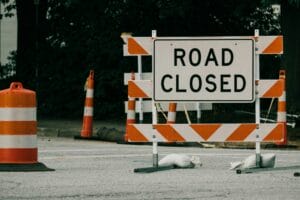An erosion and sediment control plan is formal documentation outlining the measures and best practices observed in a construction project to prevent erosion and sediment deposits on the site. This plan provides a framework for controlling erosion and sediments during and after a project.
An Erosion and Sediment Control Plan has the Following Elements:
1. Preserve Vegetation
This element of the sediment control plan stipulates the existence of protective materials against anything but clear runoff. There should be vegetation buffers and natural barriers for protecting sensitive and vulnerable ecosystems before soil erosion occurs. The plan must mark sensitive areas for protection, including protected and vegetated ecosystems.
2. Construction Access
Clearly define construction access points. Always minimize vehicular traffic and stabilize vehicular access points using crushed materials. Flooring materials or stabilizing agents like limestone are not allowed on site. Clean all access points at predefined intervals and at the end of every work shift.
3. Flow Controls
It’s the responsibility of environmental state departments to control flows. Only approved inflows are allowed, and these must meet specific flow guidelines and approved flow methods.
Proven methods will be used if any flow control is required. Always protect streams and properties downstream in the event of a runoff. And always seek a solution that reduces flow and soil erosion to the minimum.
4. Sediment Control
It’s advisable to install sediment controls that conform to a site’s topography. Record any information regarding a site’s soil, water, topography, and drainage before construction or project commencement.
You should provide alternative best management practices (BMPs) where standard ones haven’t stipulated the protection required.
Pass stormwater through a sediment trap or another equivalent measurement before entering drain inlets. Providing sieving solutions to stormwater is a great way of preventing downstream water pollution.
5. Stabilize Soils
Soil stability is a critical element of any sediment and erosion control plan. Soil stabilization best practices include erosion control fabrics, geotextiles, mulching, seeding, and sod stabilization. It’s advisable to identify and report any soil erosion-related issues and report them to your site engineer.
6. Slope Protection
Construct cut-and-fill slopes on steep terrains to minimize erosion. Slope protection methods include diversions, terracing, and steepness control. Secure the work site by using commonly used construction materials.
7. Protecting Drain Inlets
Routinely inspect catch basins, drains, and stormwater components. Install filters in the catch basins to protect all drain inlets from sediments. It’s advisable to clean and remove sediment from inlet protection materials (and devices) immediately after they reach a third of their capacity. All sediment should be extracted before it even attains a quarter of the total fill in the inlet protection material.
8. Stabilize Channels
Use rocks and gravel to stabilize slopes and adjacent stream banks. Install silt fencing before construction. In most states, no work can continue within fifteen meters from the top of the bank without a permit from the Department of Environment or a similar regulatory agency.
9. Pollutant Control
Different states have different pollutant control laws. However, although there are subtle differences in the inter-state pollution control frameworks, most areas have distinct similarities.
Common Pollution Control Requirements in Erosion and Sediment Control Plan Include:
- Protecting chemicals and other harmful substances from coming into contact with stormwater
- Handle and dispose of prohibited products properly
- Prohibited substances include waste oil, chlorinated water, herbicides, pesticides, soap, detergents, or paint
- Treat contamination of groundwater runoff using fly ash, cement kiln dust, and bulk cement.
Always obtain written approval from the relevant body or department, depending on your state.
10. Control Dewatering
It’s advisable to control dewatering before or during the construction project. If your dewatering water is muddy or even contaminated, treat it separately from other water.
11. Maintaining Best Management Practices (BMPs)
Always adhere to the best management practices in your erosion and sediment control plan. Constantly refer to sediment control guidelines and best practices.
To do this, inspect sediment control best practices at least once every seven days. Conduct evaluations within twenty-four hours after stormwater is discharged from the site.
12. Manage the Project
Plan to construct your project in phases. Constructing in phases reduces the project’s impact on soils and surrounding stormwater.
Always document your plans, whether doing stormwater inspections, repairing, or conducting maintenance.
DFM Development Services – Erosion and Sediment Control Planning
Our erosion and sediment control services are one of many environmental compliance services we offer. You can always contact DFM Development Services for consultations and solutions on erosion and sediment control.




